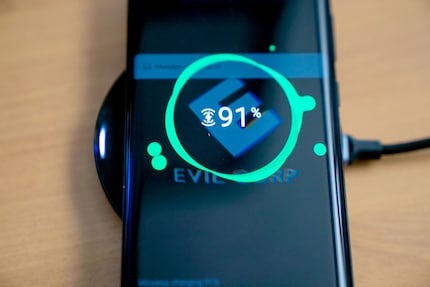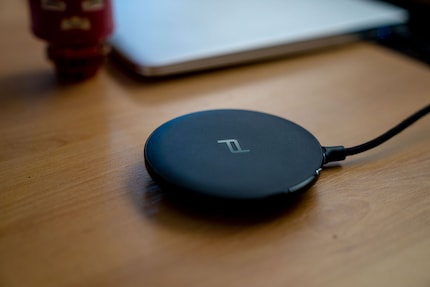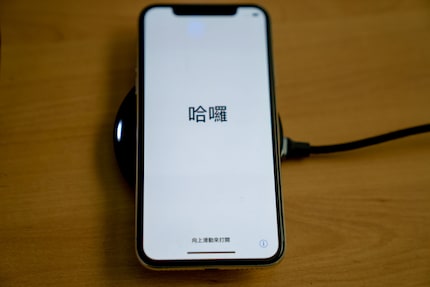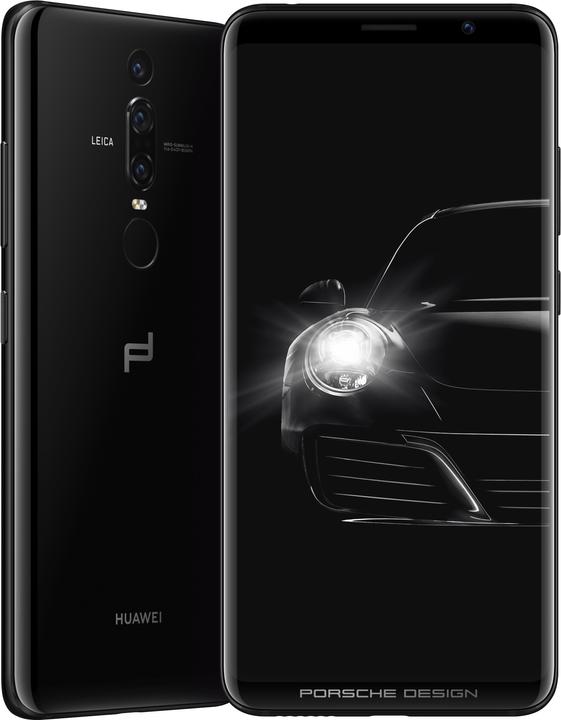

Wireless charging: quality of life without cables. Really
I'm an old man. I have to say that, because I'm already starting to have a certain fixed attitude towards technology. So today I can answer the question: Why do you need wireless charging?
"Huere Gugus", I think to myself in a broad St. Gallen dialect as I unpack my Porsche Design Mate RS. Not because of the phone, but because of the exclusive Porsche Design wireless charger. It comes free with the phone! Wow. Great. Such a useless thing for free. Totally good.
Admittedly, I've already had a few phones with the wireless charging feature, but I've never used it. Why would you? You have to go to the trouble of buying a charger, which then charges the phone more slowly than the cable. Who wants that? I certainly don't.
So now the round block without any recognisable features, apart from the Porsche Design logo. And this is supposed to be the revolution? Pah!
Ten-year-old technology is all the rage
The device is set up quickly. Plug the USB-C cable into the side and you're done. Then I just have to place the phone on the charger and that's it. It's not rocket science, except that I generally have to place the phone roughly in the centre of the charging platform, otherwise it won't work. When I hit the area where the charging process starts, an LED lights up on the platform.

So there it is, the wireless charger. Of necessity, I have to deal with the thing. Except that it doesn't have any buttons, switches or anything else.
Whether your phone uses the PMA standard or the more common Qi standard - both of which are wireless charging standards - wireless charging essentially works in exactly the same way. The entire technology consists of two coils. The primary coil in the charger and the secondary coil in the phone, or the object that you can charge via wireless charging.
The current that the charger draws from the mains and which ends up in your battery flows through the primary coil. When you place your phone on the charger, the electromagnetic induction is started. This technology is not new and was discovered back in 1831 by British scientist Michael Faraday. And then again, independently of Faraday, a year later by the American John Henry.
During electromagnetic induction, the primary coil emits an electromagnetic field that supplies the secondary coil with electricity. The secondary coil then charges your battery. The whole thing works at a distance of around four centimetres, but if you place your phone on the charging pad, that's five millimetres at most.
The technology is not new either, just like electromagnetic induction. The Wireless Power Consortium introduced the technology and its standard back in 2008. At that time, however, charging via induction was more of a demo. The charging process was slow and energy inefficient, so it was something you could definitely overlook.
But the Qi of ten years ago is not the Qi of today. Today, Qi Fast Charge is on the rise. In other words: fast battery charging, little waste of energy within the electromagnetic field. In short, this means that you can now charge your phone just as quickly with wireless charging as with a cable.
My life is changed
Be that as it may, every time I put my phone on my desk, I now just put it on the charger. And why not? A week after I got into the habit of doing this, I realised that wireless charging solves problems that I just took for granted as everyday and unchangeable.

Doesn't look like much
Wireless charging is a piece of quality of life.
I see this in a similar way to my switch from normal light bulbs to voice-controlled smart lights in my home. I haven't flicked a light switch since January, I just tell my flat to switch on the light when I'm still working in the kitchen in the evening. Until I made the switch, pressing the light switch was something that couldn't be changed. It was like that because it was like that, it stayed like that because it was like that.
I had a similar experience with power cables and smartphones. Cable clutter in the home office, cable clutter in the bedroom, cable clutter in the office. But now there's a little round thing that works without me having to make any more effort. The unchanging cable chaos is a little less messy. Although the Qi standard is not as widespread as I would currently like, it makes my life a lot easier.
Even better is the fact that the standard has not only been adapted by Android phones, but also by Apple. So I can charge an iPhone X on the pad just as easily as a Huawei Porsche Mate RS. That's exactly how I want the phone world to be. Everyone with everyone and in the end, I and you, the users, win.
A little battery lore on the topic of modern batteries
On the Internet and at regulars' tables, in break areas and in many other places, there are many theories floating around about how exactly a battery should or must be charged. Some say it should be as empty as possible. Always at 100 per cent, say others. The truth lies somewhere in between. Constant charging does not harm the effective performance. The battery doesn't get weaker, but it doesn't get stronger either.
- Battery University recommends not letting the battery fall below 50 per cent
- Samsung advises that the battery should not drop below 20 per cent
The experts agree that the battery should be fully discharged as rarely as possible. This is stressful for the technology built into the battery and can shorten battery life. If you fully charge a battery without a phone, you should unplug it when it reaches 100 per cent charge. Since the Samsung Note 7 exploded, however, manufacturers have gone to great lengths to prevent this from happening. Manufacturers have therefore built in mechanisms that minimise battery stress.
Batteries, however, do not like big changes. They are not particularly keen on large temperature fluctuations or being completely drained every day. And if you don't want to use your phone or other lithium-ion battery device for a long time, Apple recommends that you leave the battery at around 50 per cent.

The platform from Huawei-Porsche also works with the iPhone
But what if you don't or can't? Your phone won't immediately explode or only perform for two and a half minutes. The above advice will prolong battery life, but violating these best practices doesn't necessarily mean your battery will die. The whole thing is not particularly complicated and the differences between compliance and non-compliance are somewhat negligible in the context of a phone's lifespan anyway.
The solution to a problem I didn't know I had
Since I've had the wireless charger on my desk, I've had no more problems with the battery. It's simply always charged. Even when I do longer speed tests via my phone's WiFi hotspot, which usually burns through the battery in no time at all, I simply don't have to worry about it.
So.
Journalist. Author. Hacker. A storyteller searching for boundaries, secrets and taboos – putting the world to paper. Not because I can but because I can’t not.
Practical solutions for everyday problems with technology, household hacks and much more.
Show all
